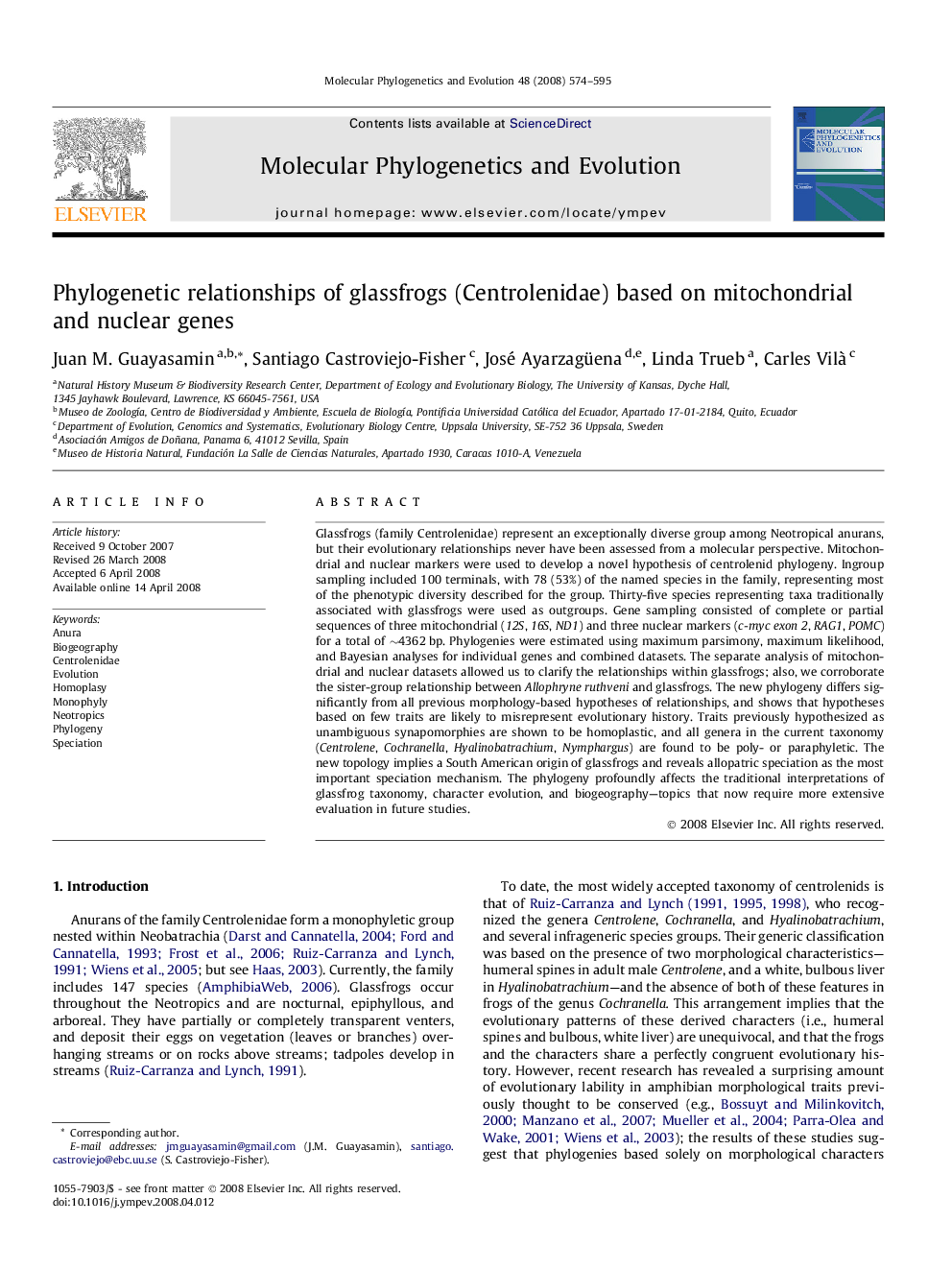| کد مقاله | کد نشریه | سال انتشار | مقاله انگلیسی | نسخه تمام متن |
|---|---|---|---|---|
| 2835085 | 1164332 | 2008 | 22 صفحه PDF | دانلود رایگان |

Glassfrogs (family Centrolenidae) represent an exceptionally diverse group among Neotropical anurans, but their evolutionary relationships never have been assessed from a molecular perspective. Mitochondrial and nuclear markers were used to develop a novel hypothesis of centrolenid phylogeny. Ingroup sampling included 100 terminals, with 78 (53%) of the named species in the family, representing most of the phenotypic diversity described for the group. Thirty-five species representing taxa traditionally associated with glassfrogs were used as outgroups. Gene sampling consisted of complete or partial sequences of three mitochondrial (12S, 16S, ND1) and three nuclear markers (c-myc exon 2, RAG1, POMC) for a total of ∼4362 bp. Phylogenies were estimated using maximum parsimony, maximum likelihood, and Bayesian analyses for individual genes and combined datasets. The separate analysis of mitochondrial and nuclear datasets allowed us to clarify the relationships within glassfrogs; also, we corroborate the sister-group relationship between Allophryne ruthveni and glassfrogs. The new phylogeny differs significantly from all previous morphology-based hypotheses of relationships, and shows that hypotheses based on few traits are likely to misrepresent evolutionary history. Traits previously hypothesized as unambiguous synapomorphies are shown to be homoplastic, and all genera in the current taxonomy (Centrolene, Cochranella, Hyalinobatrachium, Nymphargus) are found to be poly- or paraphyletic. The new topology implies a South American origin of glassfrogs and reveals allopatric speciation as the most important speciation mechanism. The phylogeny profoundly affects the traditional interpretations of glassfrog taxonomy, character evolution, and biogeography—topics that now require more extensive evaluation in future studies.
Journal: Molecular Phylogenetics and Evolution - Volume 48, Issue 2, August 2008, Pages 574–595